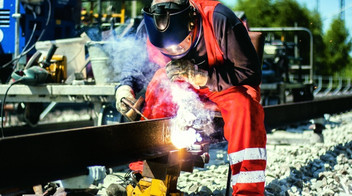Management approach and targets
When constructing track infrastructure, it is not always possible to avoid interferences with nature. For us, nature conservation and the protection of biodiversity is an important commitment, which we take into account from planning through to construction and operation of our facilities. In our activities, wherever an intervention cannot be avoided, adequate compensation areas are created to ensure we fulfill all of our obligations under nature protection law. For all DB Group companies in Germany, we implement with our environmental protection framework guidelines, such as “Nature conservation compensation obligations,” “Qualification of an environmental specialist/environmental construction supervisor in accordance with the Environmental Guide of the Federal Railway Authority” and the “Integrated Plant Protection System” requirements and directives in these topics. For example, the guidelines on nature conservation compensation obligations have been governing the handling of those obligations from planning through implementation to maintenance since 2017, and define the fundamentals for the legally prescribed reporting to the approval authorities and the use of the Nature Conservation and Compensation Specialist Information System (FINK).
As part of the planned new construction line Frankfurt —Mannheim, DB Group is carrying out various nature conservation measures over an area of about 700 ha. The central project of the planned compensation measures is DB Klimawald to protect the forests of Southern Hesse – an excellent example in the context of the UN Decade for the Restoration of Ecosystems.
In addition, on the 260 ha site of the former munitions plant in Münster-Breitefeld (Muna Münster), the Wisent-Wald nature discovery path was created as an environmental education project.
In addition to a large number of compensation measures, we are also taking measures in driving to protect biodiversity and vegetation control. For example, as an advance species protection measure for the Fehmarn Belt Fixed Link, thousands of amphibians, especially pond newts and crested newts, were transported from the winter habitats in the railway embankment to nearby spawning waters and frost-resistant winter hideouts which were built for the coming winter.
In addition to our compensation measures, we have converted the former track facilities around the Delmenhorst interlocking into a green biotope. Over an area of approximately 5,000 m² financed by us, a special site is being built with lean meadows for rare animals and plants that are virtually impossible to find in today’s landscape. On the disused tracks, lean meadows were sown, more than 300 trees and shrubs were planted, and piles of dead wood and bat boxes were positioned.


